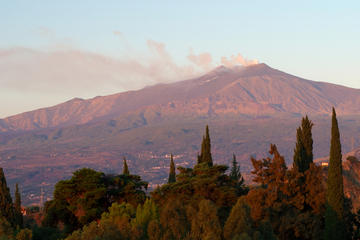Mount Etna
TIME : 2016/2/22 11:38:15

Mount Etna
Mount Etna, on the island of Sicily, is Europe’s tallest active volcano. Not only that, it’s one of the world’s most active volcanoes and, as of 2013, is an UNESCO World Heritage Site. It is a small wonder, then, that this mountain has shaped much of Sicily’s past and continues to impact life on the island today.
The volcano sits near the eastern coast of Sicily, not far from the major port city of Catania. Eruptions from Mount Etna have been responsible for serious damage to cities and towns lying close to it, including one in 1669 that destroyed the villages that had been built on the mountainside. People continue to inhabit the mountain, however, partly because the rich volcanic soil makes an excellent base for crops. You’ll find not only fruits and vegetables growing on and around Mount Etna, but also grapes - there are many wines that owe their prominence to the volcano.
Eruptions occur on Mount Etna with such regularity that no matter when you visit it’s possible you could witness an eruption. Eruptions that come from the summit of the mountain (rather than out from the side) can be the most visually stunning, especially at night with brilliant orange lava spitting into the dark night sky. You can hike on Mount Etna, but it’s not advisable to do this without a local guide who knows the area well.
Day trips to Mount Etna are easy from nearby cities like Catania, Taormina and Messina. You can either opt for a tour on foot or take a shorter trip via 4-wheel-drive truck. You can also catch a local bus that runs once daily from Catania and Nicolosi up to the Rifugio Sapienza, which is the starting point for many hikes and treks. Keep in mind that even during the summer months, the upper elevations of Mount Etna can be quite cold and you’ll want to bring adequate gear.
